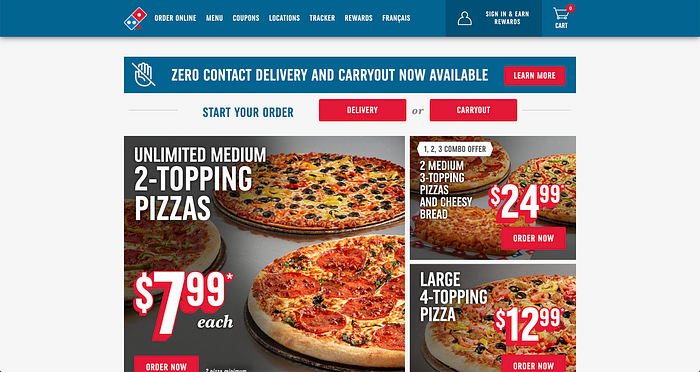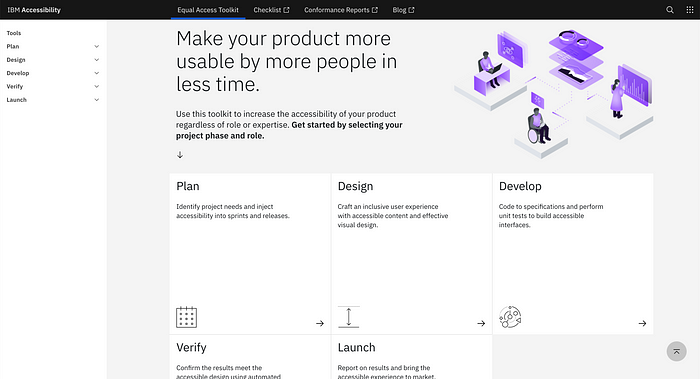The business value of accessible design
Understanding the impact of accessibility on the bottom line and how designers can advocate for it to decision makers.
Accessibility is often overlooked by teams during the product development cycle. Admittedly, it is difficult for companies to quantify the benefits of accessible design and the implied costs of not considering it from the start of a project.
Having many complex business decisions to make, product owners may deprioritize accessibility over concern that it will cause delays in releasing the product on time. Others may perceive the cost of implementation to be too high relative to the return on investment.
From my working experience, some decision makers think of accessibility as just “nice to have” and right now, it would take too much time and resources that we don’t have.
“Let’s put this in the parking lot and come back to it later.”
The problem is, there always seems to be other items that take priority over accessibility, so that parking lot discussion either gets pushed back again or never ends up happening.
Decision makers either don’t fully understand the business value of building accessible products or they choose to focus on other work that has a more clear-cut impact on the bottom line.
Disability impacts all of us
Typically when a product team conducts user research, they target a specific user group to understand their needs and motivations. What they don’t always consider is that users are real people with real-life problems. Any user group can have people with specific needs that require attention in order for them to be fully functional with a product.

Around 26% of the US population lives with some sort of disability, yet they are often forgotten about during product development. These disabilities affect users’ mobility, cognition, hearing, vision and other aspects of their well-being. By not designing for these users, we are excluding a large portion of every user group out there. Besides, creating fully accessible products will only improve the experience for all users.
The consequences of inaccessibility
So what happens when a product is released and a person with a disability is not able to fully use it due to a lack of accessibility features? Well, there’s a high chance that they become frustrated with the product and stop using it. It’s also possible that the user files a complaint or even worse, a lawsuit against the company citing disability as a ground.
A well-known example is the case against Domino’s for having an inaccessible website, which prevented a blind person from ordering food from the pizza chain. The person won the lawsuit as his attorney argued that “the Americans with Disabilities Act requires businesses with physical locations to make their websites and other online platforms accessible to those with disabilities.”

Although the impact of creating accessible products can be hard to quantify, it is clear that ignoring accessibility issues could potentially damage a company’s reputation, and thus be reflected in the bottom line. Building accessibility into the product early on can easily prevent lawsuits and bad press around a company.
The cost savings of accessible design
Cutting out accessibility efforts can save time and resources in the short term, but can lead to frustrated and dissatisfied customers overwhelming your support team. Considering accessibility from the start of a project can be worth avoiding rework and additional costs of resources.
According to a research study on the impact of usability investment on the cost of quality, fixing a usability issue can cost up to 100 times more resources during development after the product has been released. Don’t make the mistake of leaving out accessibility early on in the process.
A success story of an organization cutting costs from implementing accessibility measures into their website is Breastcancer.org. The non-profit organization redesigned their website to increase usability and as a result, their average weekly support requests decreased by 80%. The value of their decision was reflected in their help desk costs which decreased by 69% (Usability First, 2007). This just goes to show that while accessibility may not appear to have an upfront impact, the cost savings can go a long way.
How designers can bring accessibility to the table
Ground your case in research and data
An effective way to advocate for accessible design is to follow the three-in-a-box model. Design, Development and Product Management stakeholders should have a conversation early on in the process around what measures need to be taken to build accessibility into the product.
When strategizing with decision makers, having user data to back up your case for accessibility can help demonstrate the valuable benefits it brings to the business. By including people with disabilities in research studies, design teams can better understand their unique needs and frustrations. You will be able to gain valuable insights, which can turn into accessibility requirements that may have been left out.
Stakeholders should also be made aware that creating fully accessible products will benefit all types of users. User satisfaction should increase while complaints decrease, leading to better customer retention and brand reputation.
Create a practice of accessible design
Winning over one product team is just a start to advancing accessibility awareness within a company. To establish a consistent practice of accessible design, teams need to adopt a culture and mindset that puts accessibility in the forefront. While management should understand and stress its importance to development teams, designers can also champion accessibility for their respective teams so that awareness can be spread across all levels of the company.

At IBM, we have a dedicated team to advocate for and educate the organization on accessibility. Our Equal Access Toolkit equips designers with the necessary resources to bake accessibility considerations into their design process. This way, when designs are handed off with accessibility specs, there is less ambiguity around the expected outcomes, which makes it easier for developers to successfully implement and verify their work.
Creating a practice of accessible design has proven to be an uphill battle, but with enough effort and dedication, it can be achieved. By educating stakeholders on the business value of accessibility while enhancing research and design processes, companies should be able to adopt a holistic approach to creating fully accessible products for all of their users to enjoy.
Thanks for reading!
Be sure to SUBSCRIBE to never miss another article on UX design, career tips, life lessons, and more!
Here are a few more to read next:
The above article is personal and does not necessarily represent IBM’s positions, strategies or opinions.

